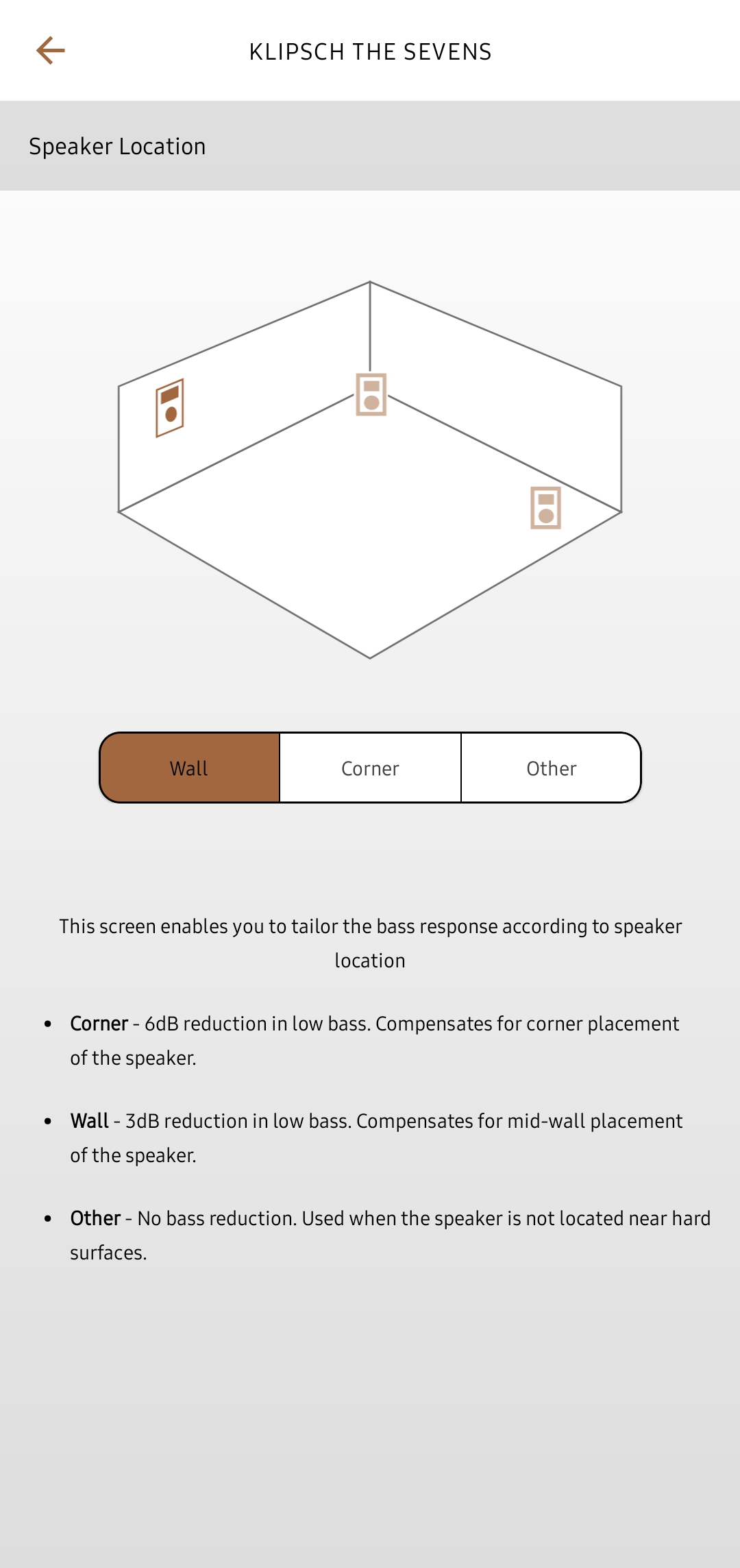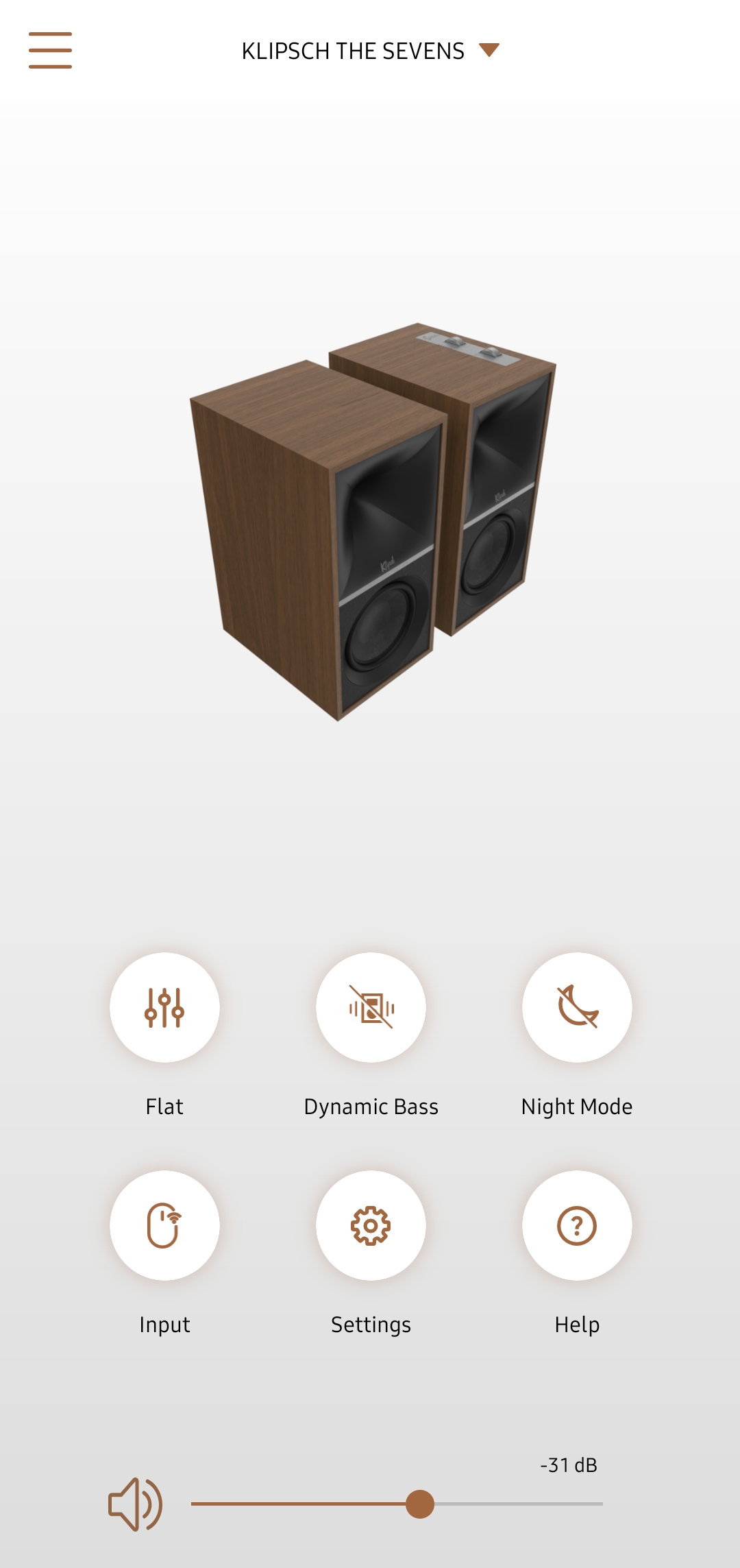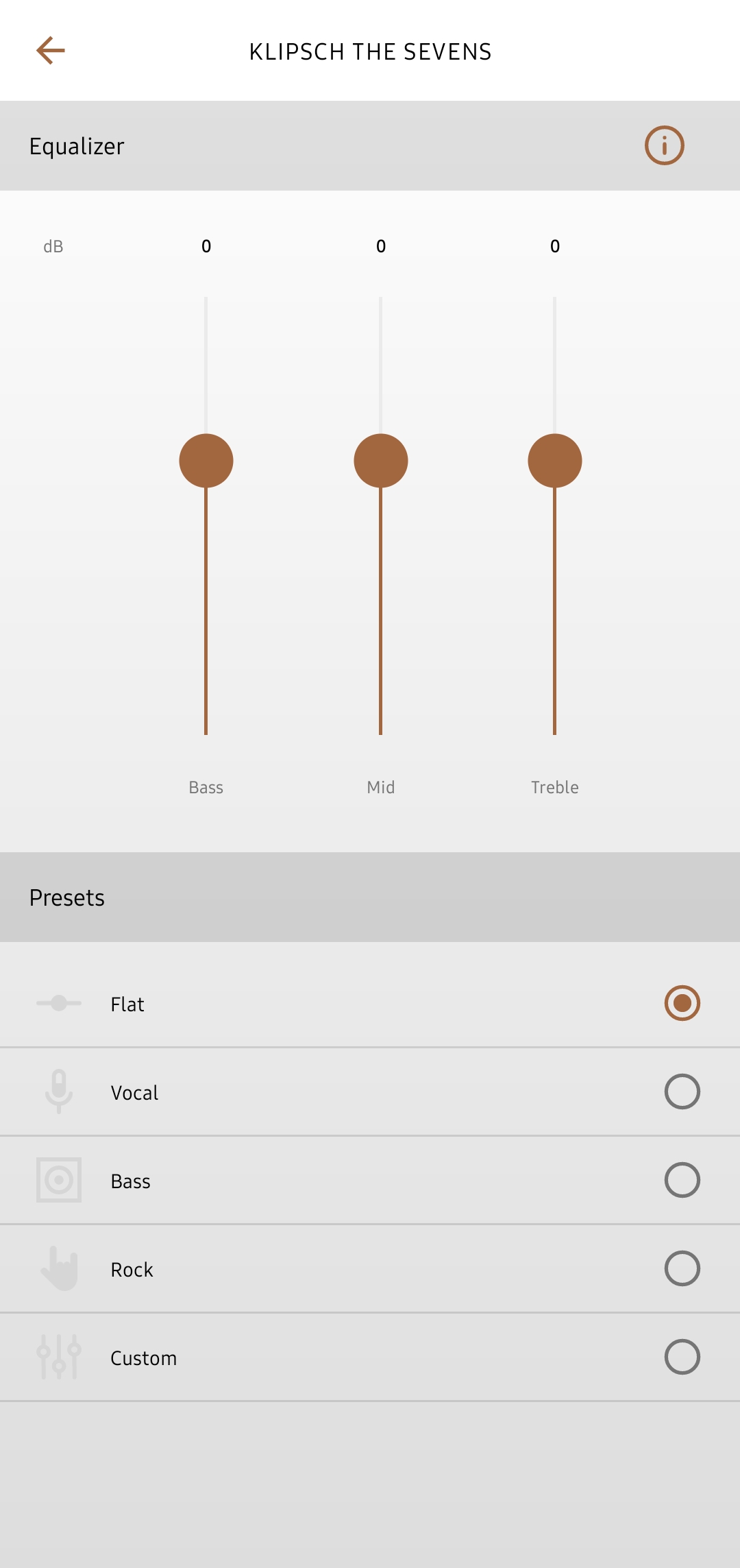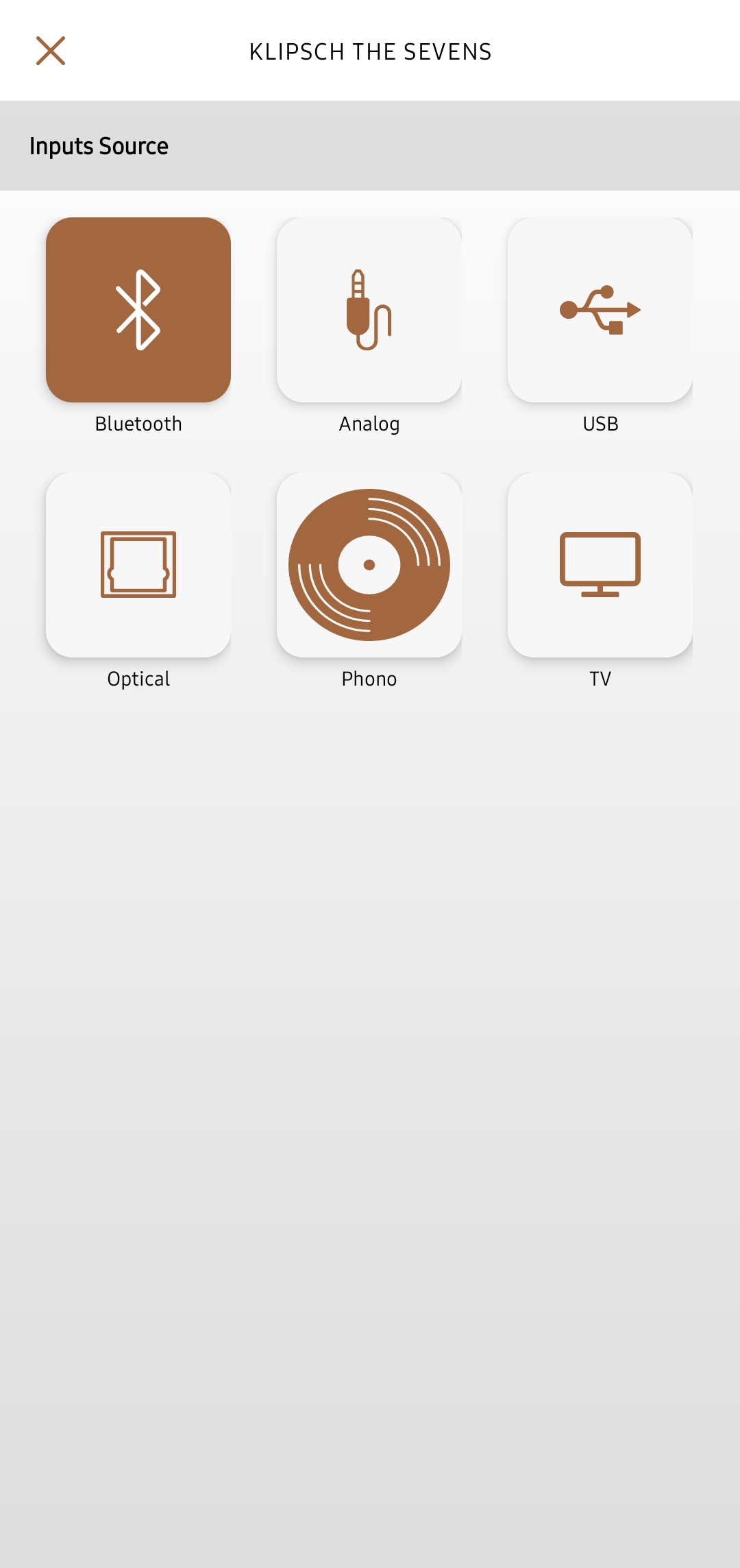The Klipsch The Sevens might be expensive but their elegent design, superb build quality, versatile feature set, and fantastic audio performance make them well worth the price. They're perfectly suited for a budding audiophile who also likes to watch the odd movie.
-
Design
-
Build
-
Sound
-
Features
-
Value
If you’re interested in audio gear, you will have heard of Klipsch. Born in 1946, in a tin shed in Arkansas, it was one of the first US loudspeaker companies to bring live music to people’s homes. Today, the company produces a wide range of audio products that all bear some of the brand’s rich history. That’s especially true of The Sevens, which fall under the aptly-named Heritage-inspired speaker range.
The Sevens are the middle child of the ‘Heritage’ family, along with the smaller ‘The Fives’ and larger ‘The Nines’. They are high-end active loudspeakers which means you won’t have to go shopping for a suitable amplifier and receiver to have a good time. They certainly aren’t cheap at R30,000 but they’re worth it if you can stretch the budget and serve as a great entry point to the hi-res audio hobby.
Dressed to The Sevens
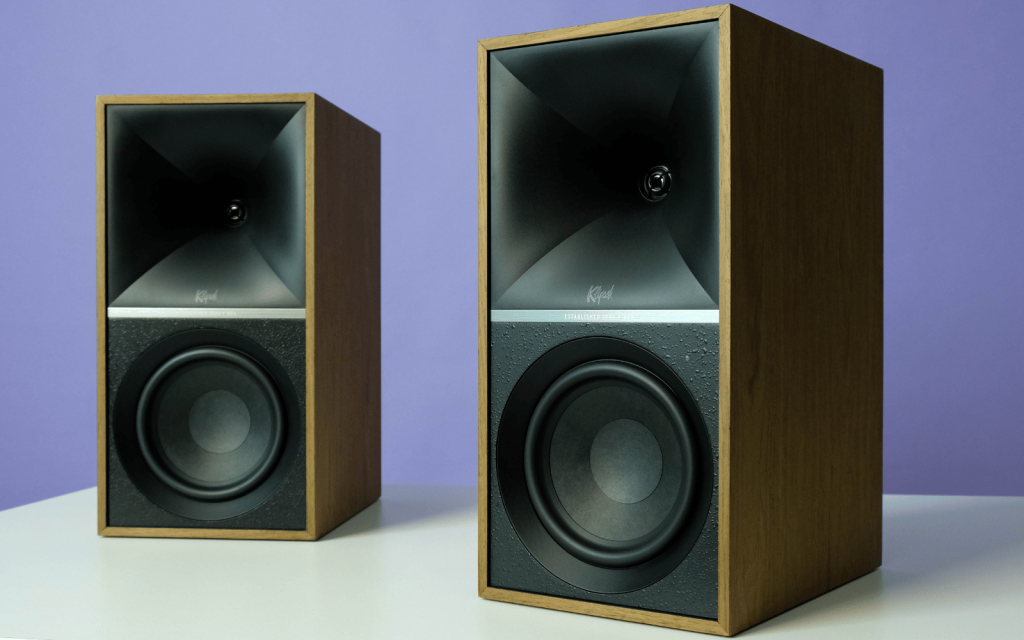 The Sevens come in two style options; all-black, or a walnut finish with off-white covers. We’re so glad we were sent the walnut option because… well, look at them. Words like ‘classy’, ‘sophisticated’, and ‘elegant’ come to mind, before you remember that they’re speakers. Premium speakers, mind you, and it shows.
The Sevens come in two style options; all-black, or a walnut finish with off-white covers. We’re so glad we were sent the walnut option because… well, look at them. Words like ‘classy’, ‘sophisticated’, and ‘elegant’ come to mind, before you remember that they’re speakers. Premium speakers, mind you, and it shows.
They are handcrafted with a real-wood veneer finish. Picking them up is also a good indicator you’re dealing with quality – remember to lift with your legs. The metal control knobs on the primary unit feel sturdy with crisp feedback while you’re selecting an input or controlling the volume.
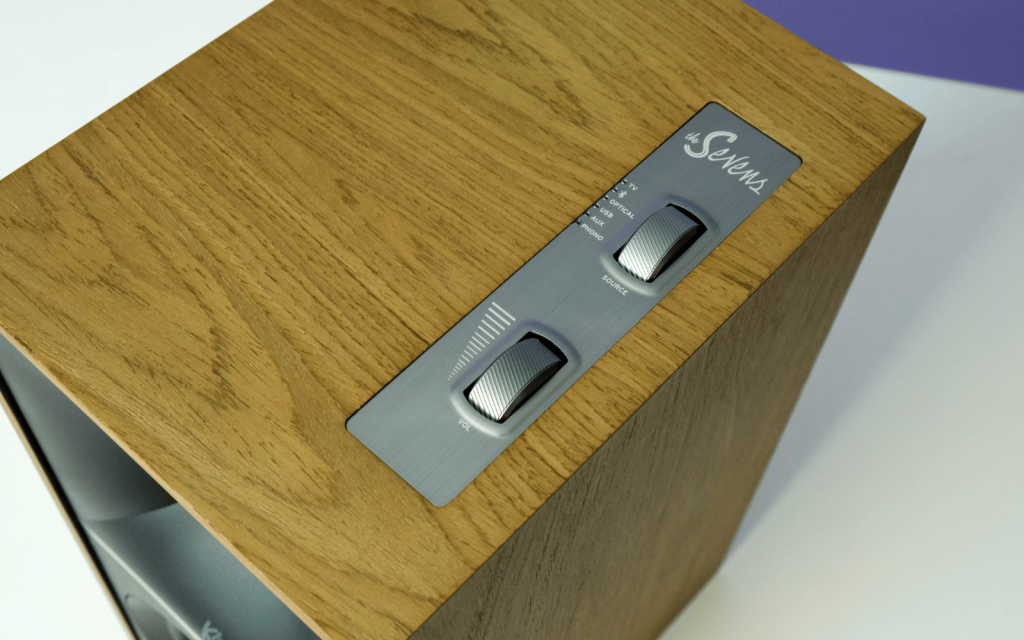 Even the quality of the included cables surprised us. They’re braided, suitably girthy, and numerous. You get several power cable options, an HDMI cable, a USB-A to USB-B cable for digital audio, and a two- and four-metre tether for connecting the two speakers.
Even the quality of the included cables surprised us. They’re braided, suitably girthy, and numerous. You get several power cable options, an HDMI cable, a USB-A to USB-B cable for digital audio, and a two- and four-metre tether for connecting the two speakers.
Back to the speakers, we noted a small issue with the control dials being where they are. If you have the speakers set up at ear height (as they should be), you won’t be able to see which source is selected while you’re sitting. That’s just how it has to be because putting the source indicator on the front would ruin the look. You’ll either have to use the included IR remote or the Klipsch Connect app.
200W of woofing
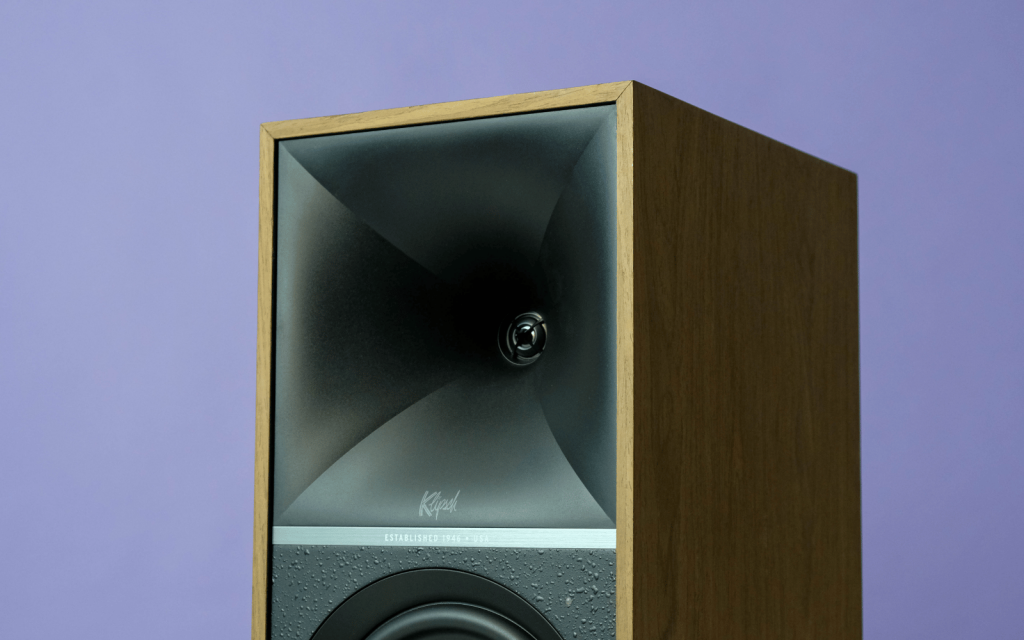 Despite the name, The Sevens feature a 6.5in high-excursion mid-bass driver and a 1in vented Titanium tweeter inside a Tractrix horn. As we mentioned earlier, these are active loudspeakers, meaning they have their own amp (200W in this case) and don’t need external power. These particular active speakers don’t require an A/V receiver either as they support a variety of inputs, all of which are found on the rear of the primary unit.
Despite the name, The Sevens feature a 6.5in high-excursion mid-bass driver and a 1in vented Titanium tweeter inside a Tractrix horn. As we mentioned earlier, these are active loudspeakers, meaning they have their own amp (200W in this case) and don’t need external power. These particular active speakers don’t require an A/V receiver either as they support a variety of inputs, all of which are found on the rear of the primary unit.
The supported ports include ARC-enabled HDMI, TOSLink, and USB for digital inputs, an analogue 3.5mm AUX jack, and a switchable line and phono preamp input for moving magnet turntables. There’s also an RCA jack for connecting a subwoofer, another USB service port for firmware updates, and the four-pole connector for sending the audio signal to the secondary unit – that’s what the four- and two-metre tether cables are for.
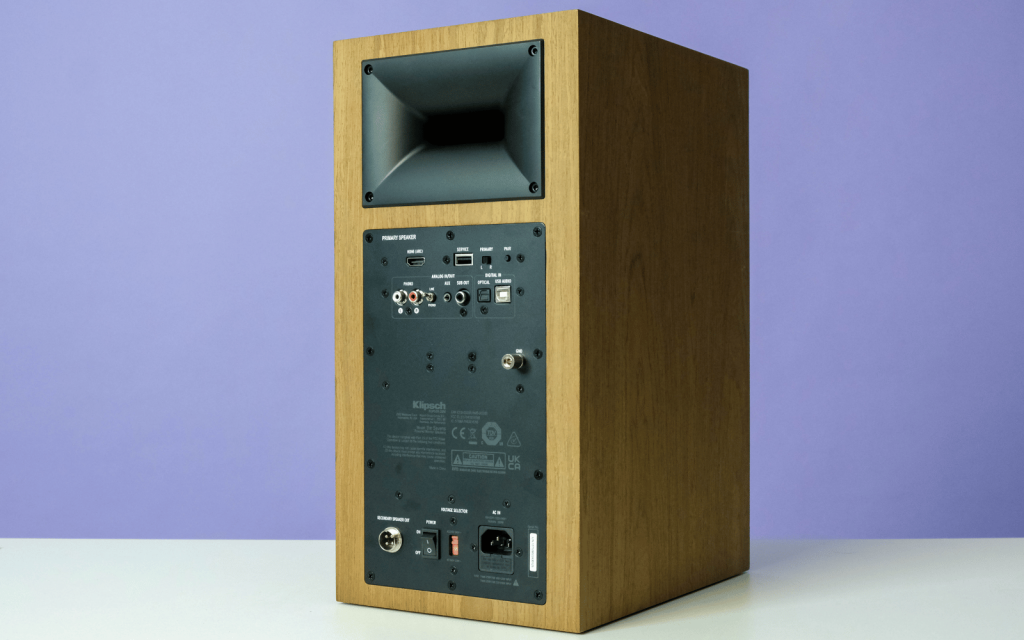 Also on the back of the primary speaker is a switch for defining how you’ve placed them. Everything you’ll need is on the primary speaker so you can have that act as the left or right channel, depending on your needs. With six metres to play with, you can get great stereo separation. That’s helped further through the Klipsch Connect app and its speaker placement guide.
Also on the back of the primary speaker is a switch for defining how you’ve placed them. Everything you’ll need is on the primary speaker so you can have that act as the left or right channel, depending on your needs. With six metres to play with, you can get great stereo separation. That’s helped further through the Klipsch Connect app and its speaker placement guide.
These don’t provide any Wi-Fi-enabled connectivity like AirPlay or Chromecast for streaming audio directly. Bluetooth is your only option using the aptX and aptX HD codecs. But then you’re not exactly putting the digital-to-analogue converters in The Sevens to work – they can decode PCM signals up to 24bit/192KHz.
Coming back to the Klipsch Connect app, in contrast to what we’ve heard from people who’ve bought (and then returned) The Fives, we had very few issues with The Sevens and the app during the initial setup and continued use. There’s a pairing button on the rear of the primary speaker if they don’t immediately show up and you’re taken through the speaker placement guide on your first connection.
The app offers a decent amount of control over The Sevens including volume control, a three-band EQ with a few presets, input selection, dynamic bass control, and a toggle for ‘Night Mode’. In the settings menu, you’re able to adjust the speaker placement if you’ve moved them since setup.
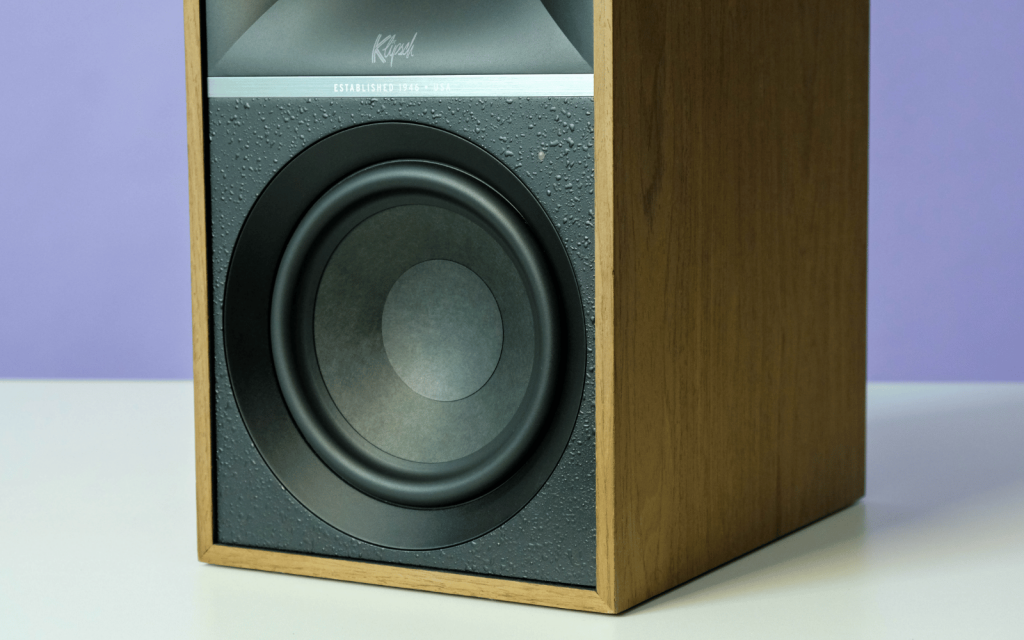 There are a bunch of other options but one we found ourselves returning to was the auto-power toggle. When toggled on, this will switch off the speakers to conserve power if no active input is detected after a while. If you plan to use these primarily as a Bluetooth speaker, firstly, why? Secondly, you might get tired of having to manually restore the Bluetooth connection or select them as the output inside your music app so you may want to leave this off like we did during our Bluetooth testing.
There are a bunch of other options but one we found ourselves returning to was the auto-power toggle. When toggled on, this will switch off the speakers to conserve power if no active input is detected after a while. If you plan to use these primarily as a Bluetooth speaker, firstly, why? Secondly, you might get tired of having to manually restore the Bluetooth connection or select them as the output inside your music app so you may want to leave this off like we did during our Bluetooth testing.
That’s what beauty sounds like
By now you’re probably wondering how these sound. They’re speakers after all so audio performance is rather important. That’s why we left it for last. These might be some of the most expensive active loudspeakers we’ve had in for review but they’re also among the best sounding.
They possess an impressive amount of taut, nuanced punch in the low end while steering clear of any mid-bass bloat. That said, some folks might want more punch due to their relatively flat response. If that’s you (you know who you are), then we’d recommend fiddling with the EQ and trying out the dynamic bass setting before dashing out to get a dedicated sub. We found the bass in the flat profile to be enough and didn’t particularly like how the dynamic bass setting influenced the sound but your mileage will vary.
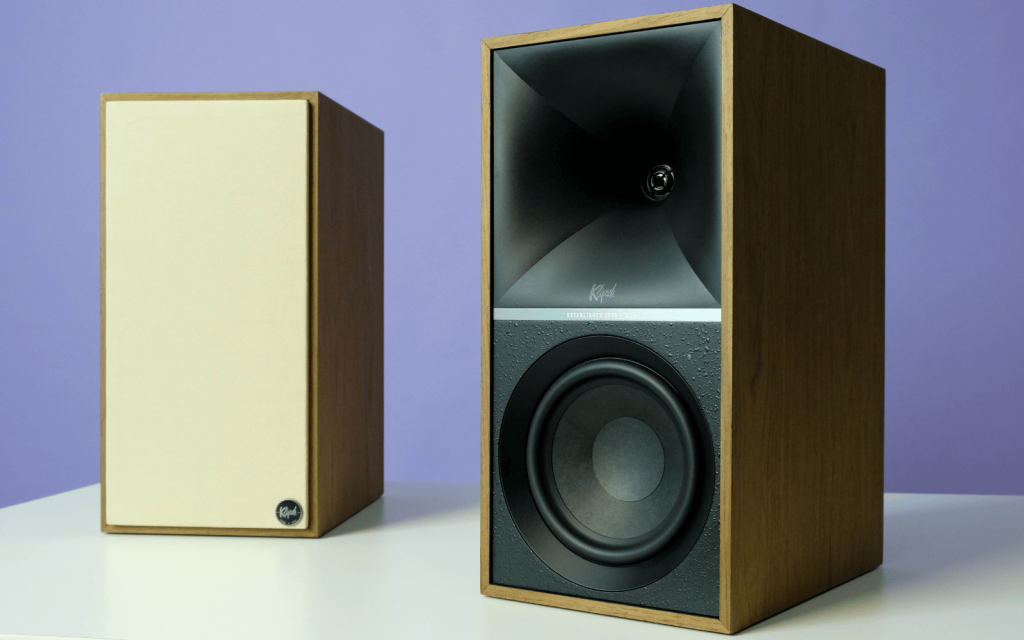 The midrange sounds mostly neutral, with good articulation and clarity, although Klipsch has applied some wizardry that grants vocals and some acoustic instruments an added sense of presence. This makes the Eagles’ Don Henley sound like he’s in the room with you singing about a hotel in California. We think.
The midrange sounds mostly neutral, with good articulation and clarity, although Klipsch has applied some wizardry that grants vocals and some acoustic instruments an added sense of presence. This makes the Eagles’ Don Henley sound like he’s in the room with you singing about a hotel in California. We think.
The Sevens perform just as admirably in the highs. There’s a smudge of roll-off that starts somewhere in the upper midrange and extends into the highs. This translates into a sound that appears to gradually recede away from you as you move up the frequency spectrum duing a sine sweep. Having said that, the highs remain crisp, airy, and detailed without being edgy and difficult to listen to.
When it comes to soundstage, The Sevens produce ample sound to fill a room with great imaging – although this does depend a little on how you have them set up. We started out with the pair one metre apart then increased that in one-metre intervals up to six metres to compare. They really started to shine the further away they were.
Overall, they demonstrated a lush sound profile with excellent tonal balance and fantastic dynamics – they handle quick jumps between quiet and loud sounds well which makes for a fun and entertaining listen with music and translates well to home cinema content.
Klipsch The Sevens verdict
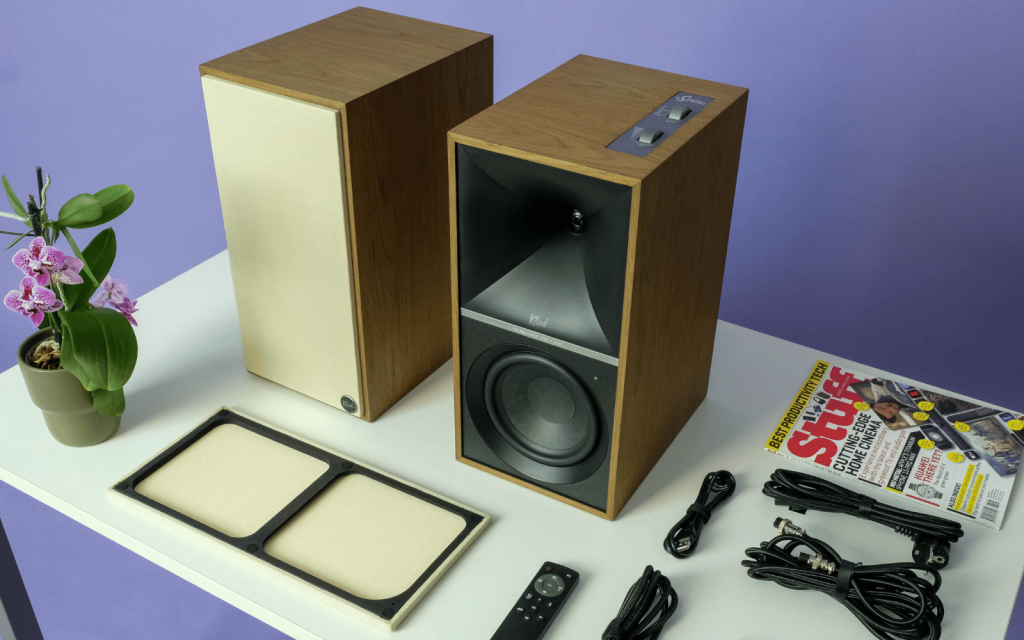 Klipsch has a winner on its hands here. Yes, The Sevens are expensive compared to your average set of two-channel speakers. Most people would probably prefer to upgrade their TV and get a cheap soundbar for the same money. Their lack of network-enabled streaming will also be a dealbreaker for some audiophiles whereas movie lovers will be looking for a multi-channel Atmos-capable setup.
Klipsch has a winner on its hands here. Yes, The Sevens are expensive compared to your average set of two-channel speakers. Most people would probably prefer to upgrade their TV and get a cheap soundbar for the same money. Their lack of network-enabled streaming will also be a dealbreaker for some audiophiles whereas movie lovers will be looking for a multi-channel Atmos-capable setup.
But if your priorities lie first with music and then with movies after, The Sevens are what you should be looking at – if you’ve got the budget. They combine the qualities of a Klipsch product that has made the brand a household name in the high-end audio space while offering a fantastic feature set for someone looking to dip their toes into hi-res audio while keeping one foot in the home cinema door. But whatever you’re playing through them, we highly doubt you’ll be upset with the result.
- This pair of Klipsch The Sevens was sent to Stuff for review by Homemation.


